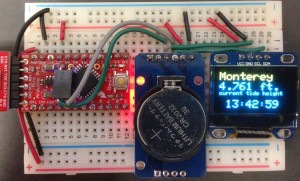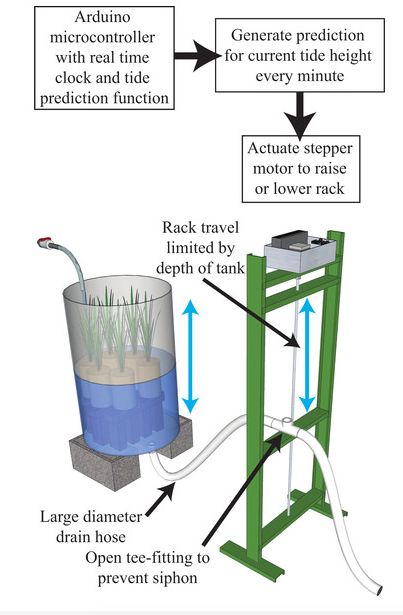As an experimental ecologist working in an intertidal system, my life was quite literally dictated by the tides throughout grad school. Bringing organisms that run on a cycle of being out of the water for 6 hours and then in for 6 hours and then out for 6 hours and then in for 6 hours into a laboratory/mesocosm setting presents a whole new awful set of challenges.
Due to the fact that many of these critters are physiologically influenced by this tidal pattern means that you too have to run on the same schedule making sure that any experimental tank systems are set up to ebb and flow with the motion of the ocean.
In case you were wondering, yes this did suck.
However, after a couple of months, our lab group started experimenting with a few different ways to do this tidal shift automatically for both rocky intertidal and estuarine environments (necessity is the mother of invention and all that).
Though my particular experiment was run on a different system, my advisor, Dr. Jeremy Long, and Stanford University Postdoc Luke Miller, did figure out a way to build a pretty swanky tidal control system.
Published recently in PeerJ, Long and Miller created this system using an Arduino controller set-up to fluctuate their tidal system. You can find the DIY Tide Controller directions on Luke’s Science version of Pintrest.
(2015) A tide prediction and tide height control system for laboratory mesocosms. PeerJ 3:e1442 https://doi.org/10.7717/peerj.1442








now i have the urge to build one–for my living room
Arduinos are such fun to play with. Just sophisticated enough to do really interesting things, and cheap enough and easy enough to work with that you don’t need to be a guru to play with them.
A bit of competition in that space, though, from the Raspberry Pi Zero – similar price, /far/ more powerful (and with USB host support, meaning you can connect a much broader range of input devices). And you can program them with /anything/, including Python or even something like Basic if you really wanted to.